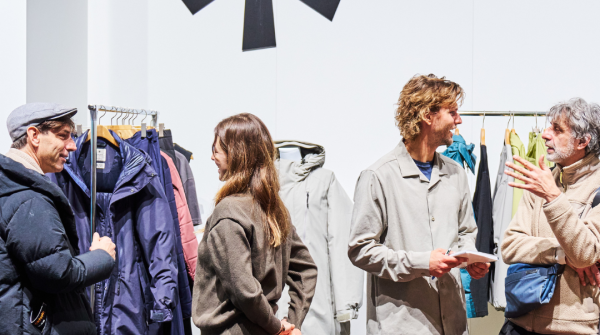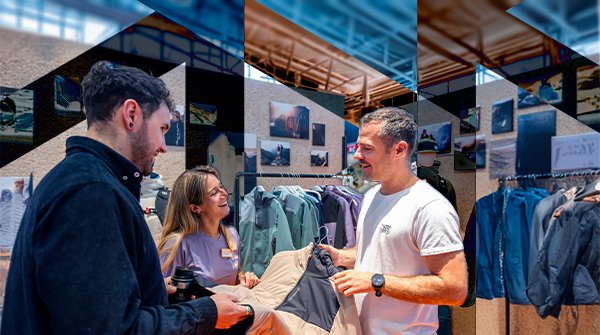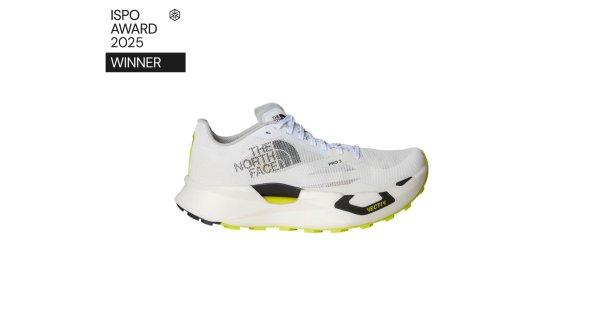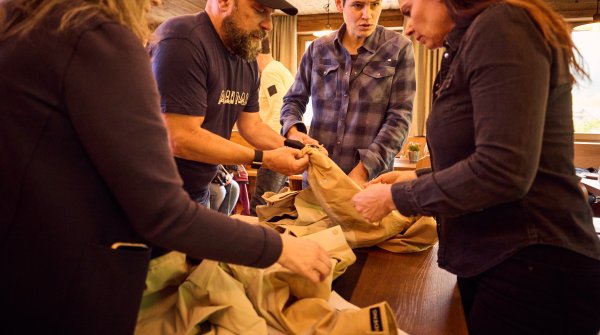This year’s award winners make one thing clear: design is no longer just about aesthetics—it has become a core strategic competency. And for good reason: the award-winning products show that modern sports equipment must not only perform but also be sustainable, adaptable, and durable. These new products reflect a mindset and a sharpened awareness of environmental responsibility. Whether in textiles or hardware, numerous innovations prove how intelligently function, form, and responsibility can be combined.
In the textile category, Patagonia impressed the award jury with the Nano-Air Ultralight Freeride Jacket - a midlayer designed for freeriders and ski tourers that sets new standards through material choices and design. Dominik Martin, Head of Business Unit at Patagonia, explains:
'What really makes this product special is the hybrid construction using two outstanding materials
The combination of 20-gram Full Range Insulation and the abrasion-resistant Trail Craft material optimizes both breathability and freedom of movement. The result is a jacket precisely tailored to the needs of active winter sports enthusiasts.
Durability and protection are also taking center stage when it comes to children's gear. . The Ballistic FlexFit Junior vest from Komperdell offers 360-degree protection - front and back - and grows with the child thanks to a flexible sizing system. Product developer Maximilian Bolzer explains:
'You can wear it over or under the ski jacket.
The vest is lightweight, washable, and durable—a textbook example of child-friendly, long-lasting design.
A standout in sustainable innovation is the Future Now: Designing to Disappear Jacket, a collaboration between luxury outdoor brand Templa, Active Apparel Group and ALLIED Feather + Down. Éimear McDermott from the Active Apparel Group shows:
The goal was to preserve design and function while achieving full biodegradability.
The result: 99.9% of the jacket decomposes within five years—only a small metal zipper component remains. Remarkable.
These examples make one thing clear: design in the sports textile industry is moving away from linear thinking. Today, modular construction, ease of repair, and materials designed for circularity dominate. In doing so, many manufacturers are voluntarily aligning with an EU initiative: the “Right to Repair” aims to extend product life through thoughtful, repair-friendly design.
One striking trend: a growing number of award-winning products weren’t developed in isolation, but through collaboration with specialized partners. The previously mentioned jacket from Templa is a prime example—developed jointly by a high-end fashion brand, an outdoor gear manufacturer, and a down insulation specialist. The Amak shoes from ULU, another ISPO Award winner, also followed a highly collaborative development process. Here, design agency Kiska partnered with ULU.
Designer Corentin Bricout explains:
It was a true collaboration - we iterated, tested, and optimized together.
These partnerships provide access to specialized material expertise, shorten development cycles, and align high design standards with functional performance. In this way, design becomes the interface between brand strategy, material science, and user experience.
New design paradigms are also emerging in the hardware sector.Komperdell Big Art Series introduces a line of freeride poles that puts personalization front and center. Instead of fixed grips, they use interchangeable tapes—for better grip, individuality, and flexibility. Maximilian Bolzer, Managing Director at Komperdell, explains:
'We use tapes that let you wrap the grip however you like..
The strap system has also been redesigned: it’s fully removable, which is practical for changing terrain. The series is rounded out with models in different materials (carbon, aluminum) and a specially developed junior version. The Big Art Series proves that smart design can combine customization, safety, and sustainability in a playful way.
Oakley takes a different approach with the Flow Scape goggle. Trevor McGowen, Product Director for Sport Performance, explains:
'“Instead of cylindrical or toric, we’re using a conical lens for the first time—the result is a field of view that’s 60% larger than its predecessor.
The new lens technology enables a clear, wide-angle view and is paired with Vision Wrapped Foam, which ergonomically conforms to the face. Thanks to Switchlock technology, lenses can be changed quickly—two variants with Prizm technology are included.
Modularity is also a key theme for Oakley: interchangeable lenses, sustainable materials, and adjustable fits not only enhance functionality but also support the “design to repair” approach.
The design trends highlighted at the ISPO Award 2024 make one thing clear: design is no longer just about aesthetics. It’s strategy, a driver of sustainability, and a key differentiator. Whether it’s a midlayer, ski goggle, or protective vest—the best products combine technological innovation with clear, user-centered design principles. What unites them is a focus on modularity, material ethics, repairability—and often, collaboration.
Brands that embrace a holistic approach to design are not only setting trends—they're future-ready. The demands are rising: legally, environmentally, and from the market itself. Those who respond with creativity come out ahead—as the ISPO Award-winning brands convincingly demonstrate.
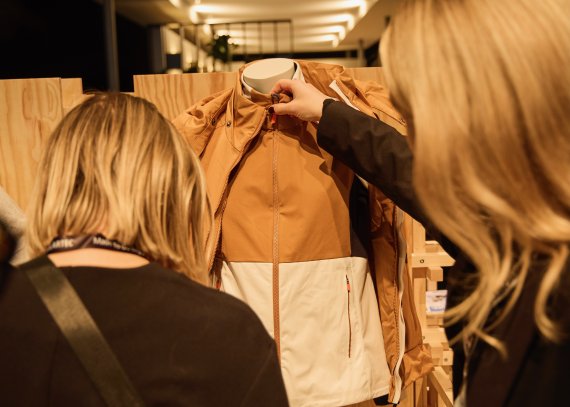
Find out which products will define the next trends at ISPO 2025. From 30 NOV. - 02. DEC, Munich will once again honor the most innovative and high-quality products in the sports industry with the ISPO Award 2025. The expert jury evaluates products from areas like Health, Lifestyle, and Running based on innovation, functionality, sustainability, and design. The award highlights the latest trends and provides valuable insights for the industry. Winners gain increased visibility at ISPO, strengthening their market position. The ISPO Award is a hallmark of quality and innovation, enhancing the credibility of any brand.
Do you have an innovative product and want valuable feedback from industry experts? Then sign up for the ISPO Award 2025 and actively shape the future of sports!
- Hybrid designs for targeted functionality
- Modularity for repair, replacement and customization
- Design to repair: components deliberately designed to be interchangeable
- Customization options thanks to flexible materials
- Multifunctional range of use (ski, bike, everyday)
- Biodegradable or recyclable materials
- Cooperation as a driver of innovation
- Material ethics: recycled or natural materials
- Technical performance despite sustainability requirements
- Design as a strategic brand element
- ISPO awards
- Mountain sports
- Bike
- Design
- Retail
- Fitness
- Health
- ISPO Job Market
- ISPO Munich
- ISPO Shanghai
- Running
- Brands
- Sustainability
- Olympia
- OutDoor
- Promotion
- Sports Business
- ISPO Textrends
- Triathlon
- Water sports
- Winter sports
- eSports
- SportsTech
- OutDoor by ISPO
- Heroes
- Transformation
- Sport Fashion
- Urban Culture
- Challenges of a CEO
- Trade fairs
- Sports
- Find the Balance
- Product reviews
- Newsletter Exclusive Area
- Magazine


